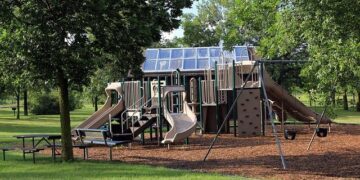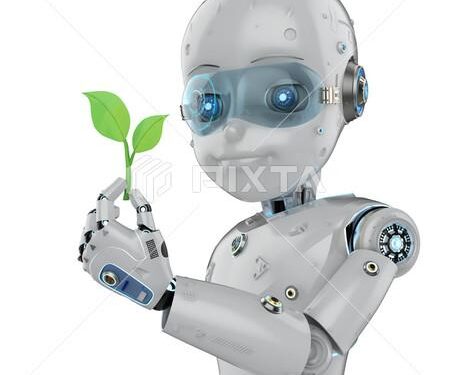Bridging Nature and Technology: The Robot Ecology Lab at UCI
The University of California, Irvine (UCI) has launched an innovative initiative that merges robotics with ecological science—the Robot Ecology Lab. This pioneering program is designed to create robots that not only replicate natural behaviors but also deepen our comprehension of ecological interactions. Located in Southern California, the lab acts as a center for researchers focused on developing autonomous machines capable of navigating and engaging with their surroundings similarly to living organisms. As we face urgent issues like climate change and environmental degradation, the Robot Ecology Lab emerges as a leader in integrating technology with ecological research, playing a crucial role in promoting sustainable living practices. This article explores the lab’s objectives, its cutting-edge projects, and their significance for both robotics and environmental conservation.
Nature-Inspired Innovations Promoting Sustainability at UCI’s Robot Ecology Lab
At the forefront of robotic advancements, the UCI Robot Ecology Lab draws heavily from nature’s designs. Researchers are crafting innovative technologies that not only emulate nature’s efficiency but also emphasize sustainability. The lab employs various biomimicry techniques, where artificial systems reflect natural processes. Notable examples include:
- Artificial Pollinators: Devices engineered to imitate bee behavior to boost agricultural productivity.
- Aquatic Robots: Machines modeled after fish that traverse water bodies while conserving energy.
- Self-Healing Materials: Technologies inspired by organisms known for their regenerative abilities.
A core aspect of the lab’s mission is its dedication to sustainable development. By utilizing renewable resources and energy solutions, it aims to minimize the environmental impact associated with robotic systems. Collaborations with ecologists ensure each design aligns with ecological principles, fostering a harmonious relationship between technology and nature. A recent project exemplifying this approach includes:
| Name of Project | Description | Impact Assessment |
|---|---|---|
| AquaBot | Robotic units designed to purify waterways by mimicking otter feeding habits. | Enhances water quality while reducing human involvement. |
| Droning Seeds | Drones engineered for reforestation efforts by imitating seed dispersal methods. | Aids forest recovery rates in areas affected by deforestation. |
Research Projects Targeting Environmental Solutions via Biomimicry
Leading innovative research on environmental challenges, UCI’s Robot Ecology Lab leverages biomimicry principles to devise sustainable solutions aligned closely with nature’s proven strategies. By studying ecosystems along with adaptive traits found in various species, researchers are creating advanced robotic systems that replicate biological functions—thereby supporting conservation efforts and ecosystem restoration initiatives. Among these projects is an exploration into how swarm robotics , inspired by ant colonies or bee swarms can be utilized for effective habitat mapping and resource management.
The interdisciplinary focus reflects not just technological progress but also aims at bridging engineering disciplines with environmental sciences through key initiatives such as:
- < strong >Eco-friendly Energy Systems:< / strong > Developing solar panels shaped like leaves aimed at enhancing energy absorption.< / li >
- < strong >Artificial Pollinators:< / strong > Crafting drones mimicking bees’ movements for improved pollination support.< / li >
- < strong >Waste Management Innovations:< / strong > Employing biomimetic designs aimed at optimizing material recycling processes.< / li >
Project Title< / th > Objective< / th > Biological Inspiration< / th > < td>The Enhancement of Energy Capture < td>The Leaf Structure < tr >< td>Pollinator Drones < td>Biodiversity Support < td>The Bee Behavior Future Insights and Recommendations for Biomimetic Robotics Development
Findings from UCI’s Robot Ecology Lab underscore significant opportunities within robotics through close emulation of ecological frameworks . By analyzing how different species adapt successfully within their environments , engineers can discover new avenues toward designing robots characterized not only by efficiency but resilience . This methodology highlightsb iom im ic ry , allowing developers t o create machines exhibiting natural efficiencies similar t o those present i n ecosystems . Key focal points include :
- < strong >Flexibility:< / s trong Developing robots capable o f adjusting functionalities based on changing environments akin t o animal behavior modifications.< li /> < s trong Energy Conservation : Utilizing designs influenced b y natural energy mechanisms t o produce low-power consuming robots .< li /> < s trong Group Cohesion : Structuring robotic units f or symbiotic operation resembling social insects , thereby enhancing collaborative task performance .< li />
To propel future research forward , interdisciplinary partnerships should be encouraged between ecologists an d robotic engineers facilitating deeper insights into ecosystem dynamics leading towards transformative innovations i n robotics . Future recommendations encompass :
-
< s trong Real-world Testing Augmentation : Creating bioinspired prototypes operating under real-world conditions gathering data directly from interactions w ith nature .< li />
< s trong Morphological Diversity Exploration : Investigating diverse forms found i n nature inspiring varied robot designs.< li />
< s trong Open-source Innovation Promotion : Encouraging shared resources among institutions accelerating developments i n ecological robotics.< li />
Conclusion: A New Era Awaits
The UCI Robot Ecology Lab exemplifies groundbreaking integration between technology an d ecology . Drawing inspiration from complex systems inherent within our environment , researchers advance both fields while deepening understanding regarding ecosystem dynamics . Their pioneering work holds promise fo r generating sustainable responses addressing critical environmental issues emphasizing importance placed upon biomimetics throughout scientific pursuits moving forward .
As this laboratory continues evolving expanding its research endeavors implications stemming from findings may extend beyond academic realms influencing future technological advancements inspiring upcoming generations seeking answers rooted firmly within nature itself .
This growing synergy connecting ecology alongside robotics could ultimately reshape humanity ‘s relationship w ith our planet making it an exhilarating domain worth monitoring closely over coming years ahead!































